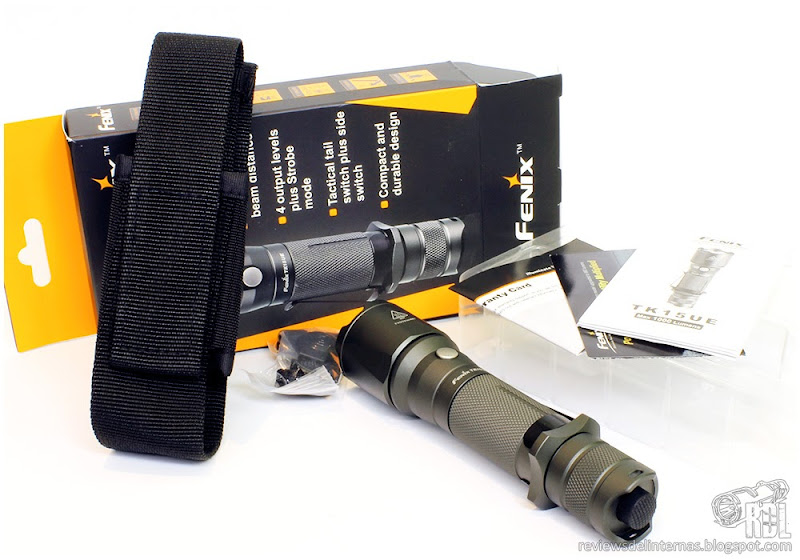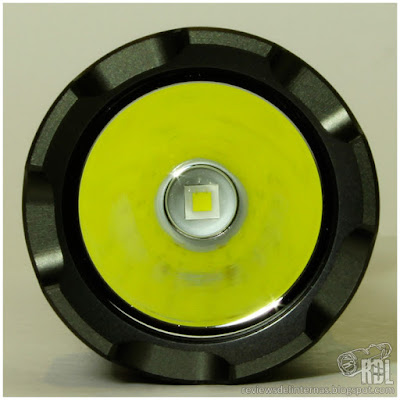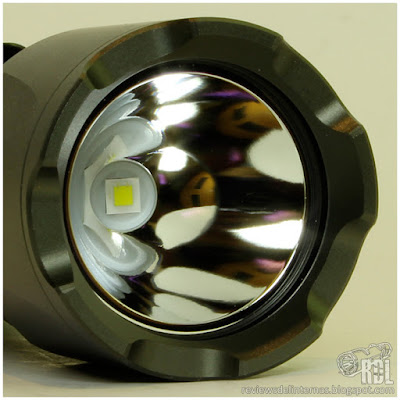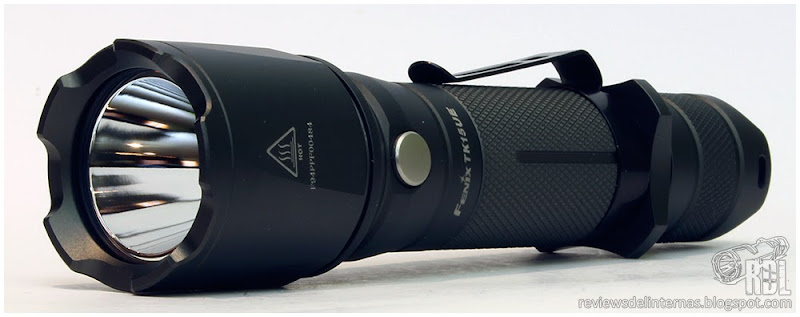
FENIX TK15 Ultimate Edition
LED: XP-L HI V3 CW
Battery: 1x 18650 / 2x CR123A
Modes: 4 + strobe intensities.
Switch: Forward at the tail, digital at the head.
Date: December 2016
Links:
Banggood Fenixlight.com · ForoLinternas RdL
INTRODUCTION
The Fenix TK family is composed of numerous flashlights that have as common denominator the combination of high performance with a robust and solid construction. Among the most popular models in the TK range we can find the TK15, which is the natural step from the TK12 (now renamed as TK09). Fenix has launched a special edition, called Ultimate incorporating an XP-L HI and jumping up to 1000lm from its previous base model , which incorporates a XP-G S2 and reaches a maximum output of 400lm.
This special edition is available in two finishes: Classic black anodized with stainless steel bezel, and an original grey anodizing finish, with a very interesting military aspect, called “Cadet gray”. Banggood offers both finished, and I have decided on the Cadet Grey.
The flashlight, like most Fenix products, comes in a cardboard box printed at full color in which inside we find the flashlight, a textile quality finish holdter, and the usual brochures about the brand, user manual and a plastic bag with a set of o-rings, a spare rear switch boot and a very basic wrist strap.
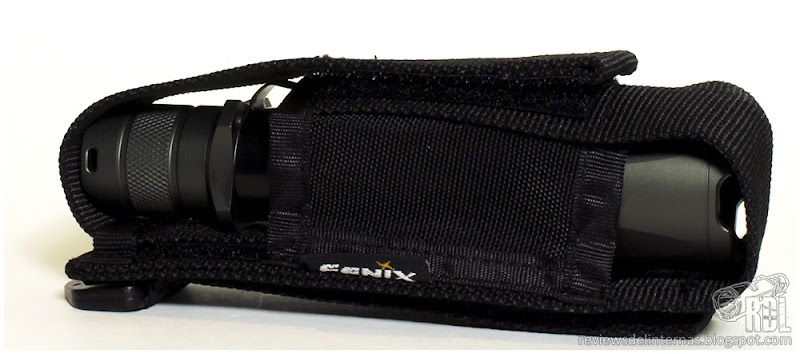
The adjustment of the holster is more than correct, allowing to place the flashlight in both directions.
EXTERNAL FINISH
The exterior appearance of the TK15UE is already well known. This is a classic tactical-looking flashlight, with a simple but effective machining, with classic lines and this time with a special anodized quite elegant. Unfortunately the camera has been unable to pick up the exact tone of the anodizing.
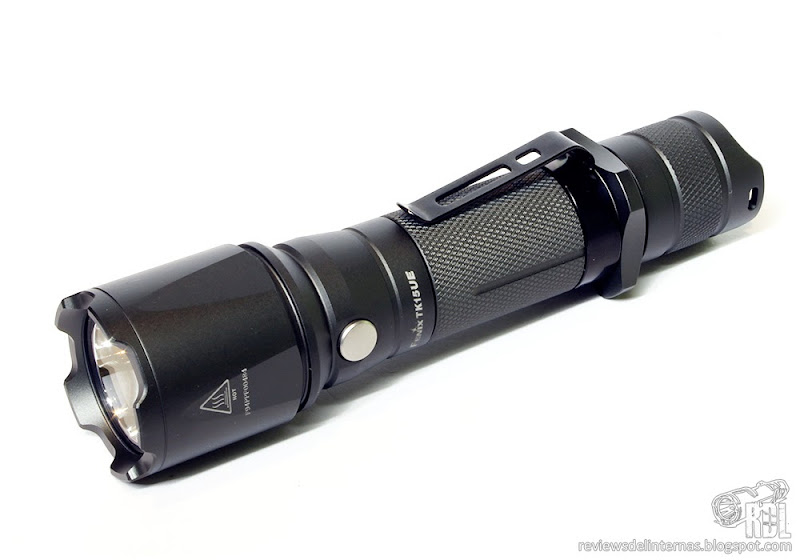
It has intermediate dimensions, being smaller and shorter than the TK22, but slightly longer than the TK12 / TK09. Its dimensions are 143 millimeters in length and a maximum diameter of 34mm in optics, weighing 140g (without battery).

The tone of the anodized is very similar to the bluish gray that some classic lights used years ago, although depending on the tone of the light with which we illuminate that gray it turns slightly to a military green.
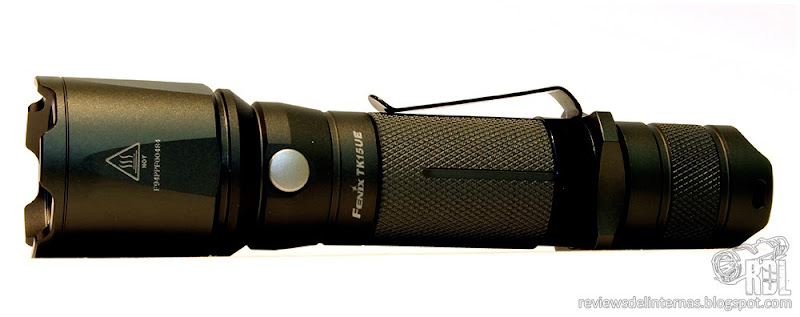
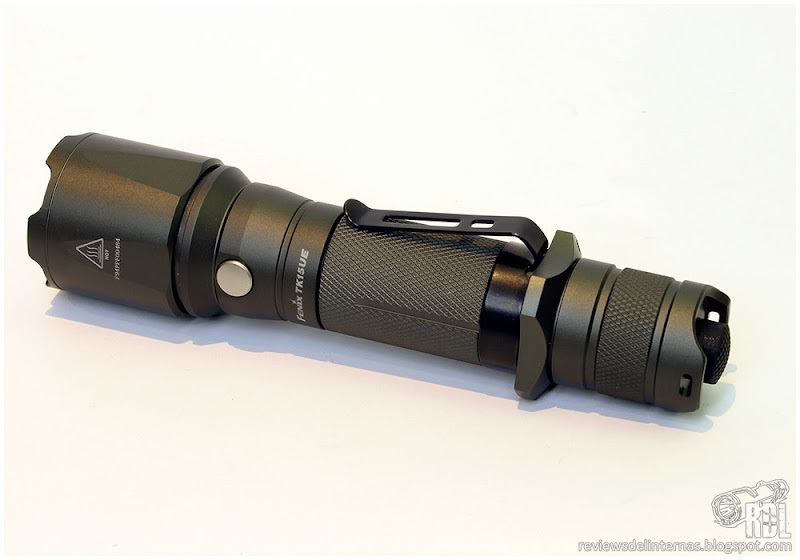
The flashlight is built entirely in anodized aluminum, including in this case also the bezel, which in the base version and also in the black version Ultimate Edition is done in stainless steel.
The optics of the TK15UE are composed of a slightly crenellated aluminum bezel, an ultra-clear glass lens with AR treatment, an immaculate smooth reflector, and in the background a CREE XP-L HI emitter perfectly in the center in a white plastic centering mechanism.
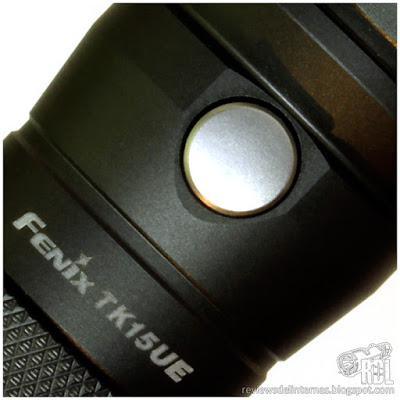
On the side of the head we find a digital switch, covered by a steel button. This button is smooth and can be somewhat difficult to locate to the touch, especially if we use gloves.
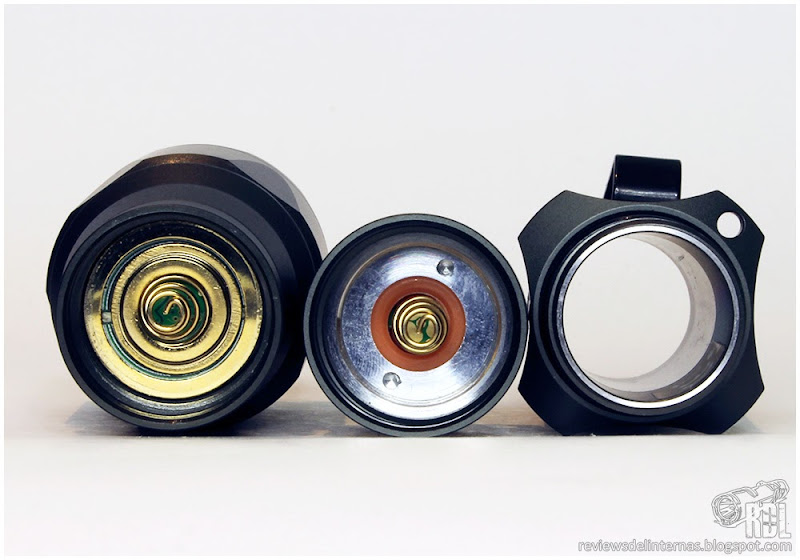
The inner contacts for the battery are more than worked, with spring at both ends to cushion any jolts produced by a firearm if we used the TK15UE installed in its rail.
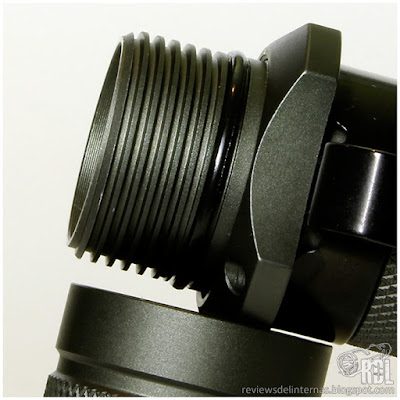
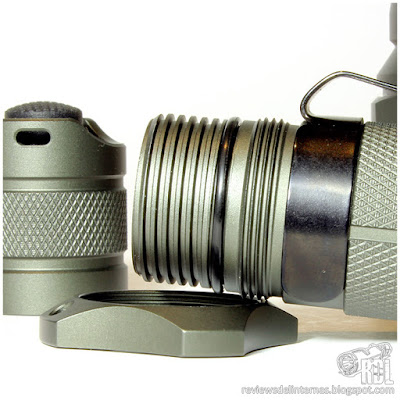
The threads have the typical trapezoidal cut that we find in the great majority of Fenix lights. They come clean and lightly lubricated. The tactical ring, made of anodized aluminum of the same color as the rest of the lantern and also acts as an anti-roll mechanism, can be removed by unscrewing. The design of the clip is the same that can be found in other Fenix lights, with a very robust clip grip.
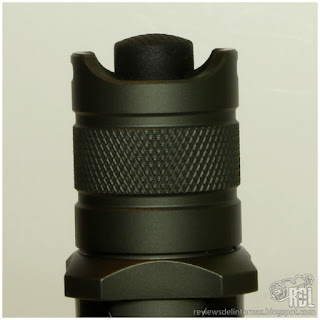
The tailcap design, where the flashlight houses its second switch, in this case a mechanical type of forward (also known as tactical), prioritizes a quick access to the switch in front of the possibility of putting the flashlight on tailstanding.
USER INTERFACE
The user interface of the TK15UE is really simple and easy to master in just seconds. It has four intensities, and a hidden stroboscopic mode, and everything is controlled in a simple and extremely comfortable way thanks to the combination of its two switches.

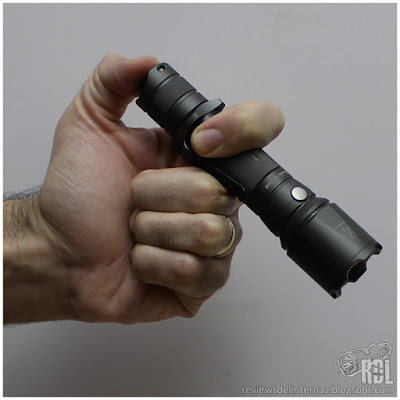
- On and off: The flashlight has a forward switch on the tailcap, through which we can activate the flashlight momentarily (pressing without actually clicking, the flashlight stays on while we keep the pressure on the switch) or permanently (pressing until you hear the click and releasing).
- Changing Modes: With the flashlight on (even momentary on), we press the head switch to toggle between the flashlight 4 main modes, in ascending order: Low -> Mid -> High -> Turbo
- Memory: The light recalls the last used mode in which we turn it off, and return to this in the next activation.
- Hidden Strobe Mode: With the flashlight on, just hold the head switch just a second to enter strobe mode. This mode has a variable frequency, alternating between fast and slow flashes. This mode cannot be memorized.
- Mechanical block-out: With its anodized threads, the Fenix TK15UE can be blocked by partially unscrewed from any of its threads. This will prevent accidental or inadvertent activation. Since there is a mechanical switch there is no parasitic current drain when the flashlight is off.
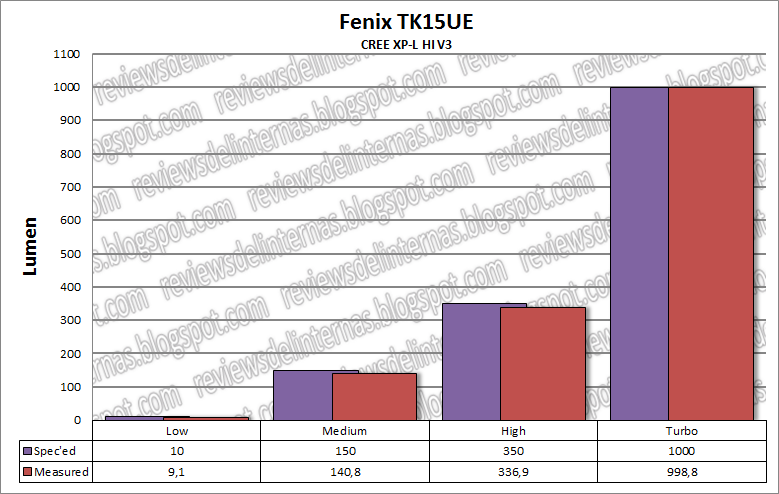
<span class=““here”:http://goo.gl/PDvRLE. details More activation. after seconds 120 and 30 between of reading highest the value as taking FL1”:Estándares ANSI NEMA FL1 - ForoLinternas - Foro sobre linternas y tecnología LED, NEMA “ANSI procedure the following taken are measurements All”>
Once again, we can see how all the effort put into the calibration of the sphere and the exclusive use of flashlights from this brand to obtain the starting values shows us an extreme agreement between what the manufacturer specifies and what we can measure by ourselves. The distribution of modes is, in my opinion, very nicely set up.
PERFORMANCE
Apparently, the latest models of Fenix incorporate a new feature that comes to supplant the previous trend of time controlled stepdown…

Instead, Fenix now incorporates for its maximum performance mode a thermal management system that will try to maintain maximum output as long as the temperature allows it. In the test, assisted as usual by a small fan, the flashlight has been able to maintain itself without doing the stepdown for almost 90 minutes, at which time presumably the voltage was insufficient and the flashlight went straight to the Medium mode, and then down again to the Low mode and remain on after two hours of uninterrupted use.
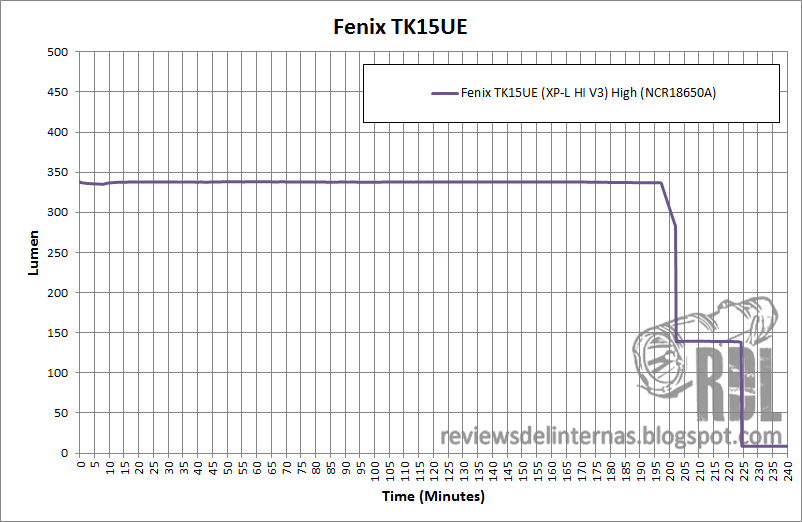
The high mode shows a linear performance, as we were accustomed to date, with a battery power management identical to the one we have seen in the last two stepdowns of Turbo mode.
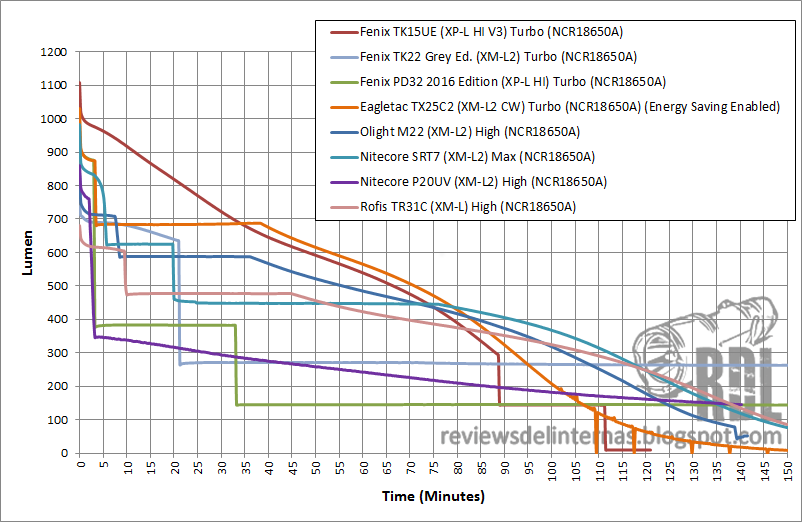
Compared with other similar flashlights, the TK15UE is the only one I have tested that does not make a drastic drop after a few minutes of uninterrupted use, and even equals or even surpasses other alternatives thanks to a better efficiency, among other things, the use of a much more modern LED emitter.
EFFICIENCY
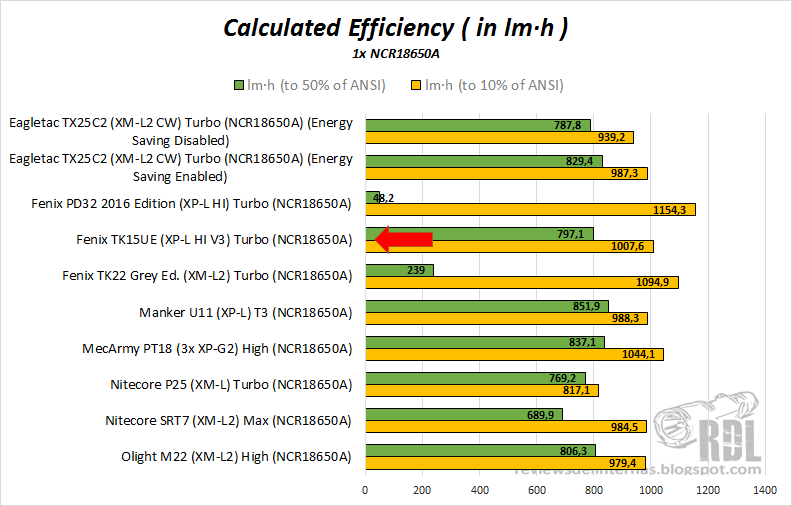
<span class=““here”:Eficiencia en linternas - ForoLinternas - Foro sobre linternas y tecnología LED. made was calculation this how of details More”>
The use of the new thermal management plays against the efficiency of the Fenix, since as it happens with the PD32 and its management of the modes by time, it manages to obtain a calculation (to 10% of the ANSI) almost insuperable for being the greater part of the time in a much more efficient output range due the drastically stepdown action. Even so, the TK15UE gets a not inconsiderable result, especially considering the shape of the line that its runtime draws in the previous section charts.
BEAM PROFILE
The XP-L HI, even with a reflector of small dimensions, is able to offer a very clear and sharp projection, going from the 250 meters of the XP-G S2 version to no less than 325 meters with this XP- L HI V3.
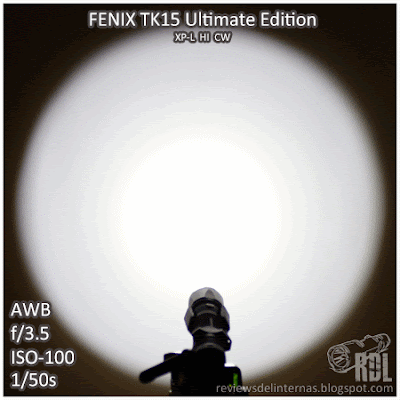
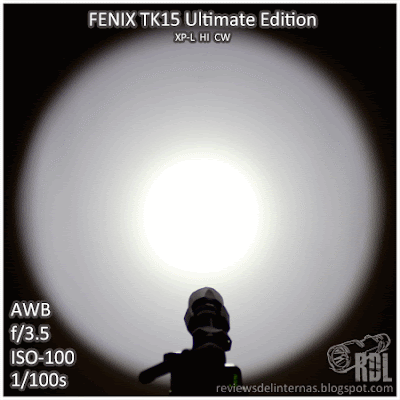
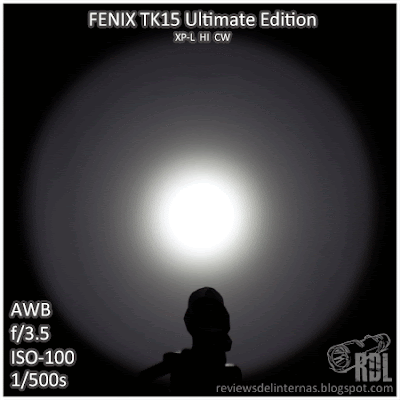

The beam profile shows a well-defined central hotspot, with a homogeneous perimeter spill light free of dark artifacts or rings.
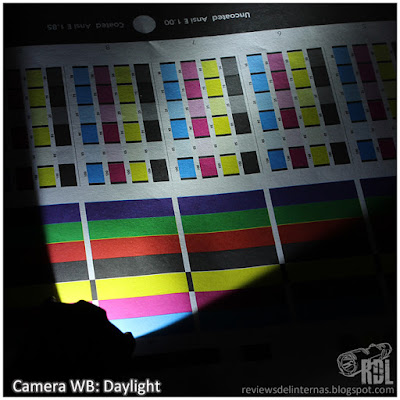
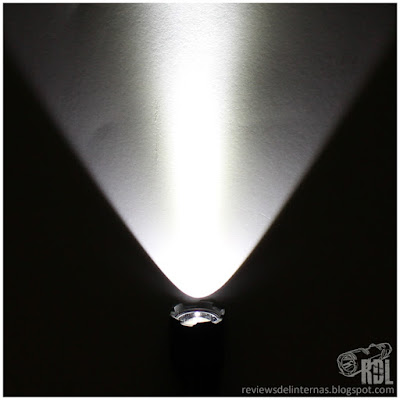
The tint is more than acceptable for a cool white. There is no presence of the typical greenish tone that surrounds the hotspot.
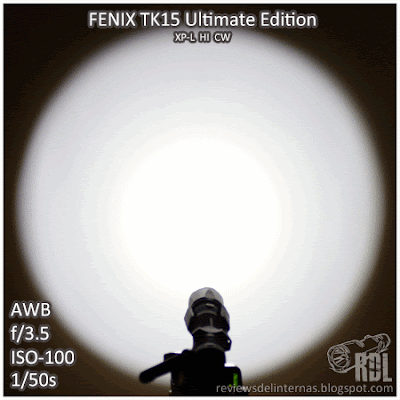
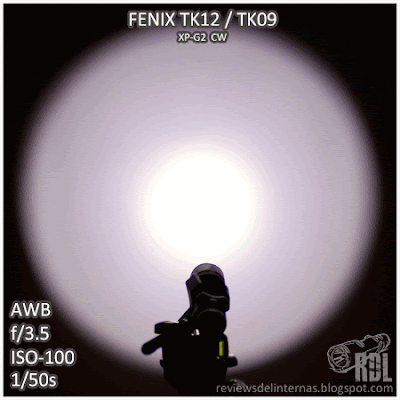
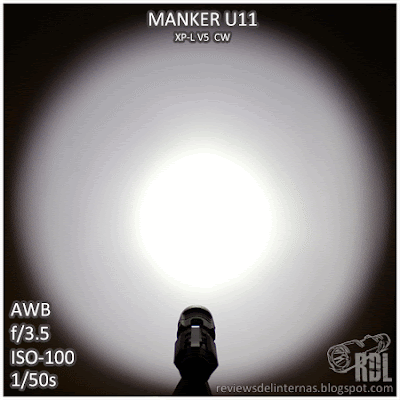
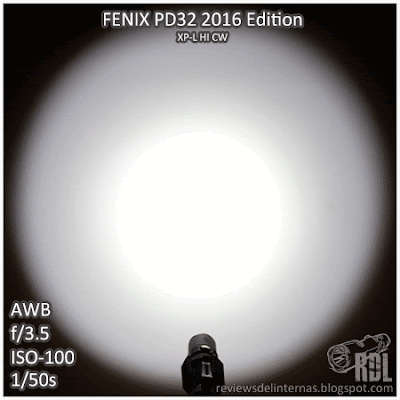
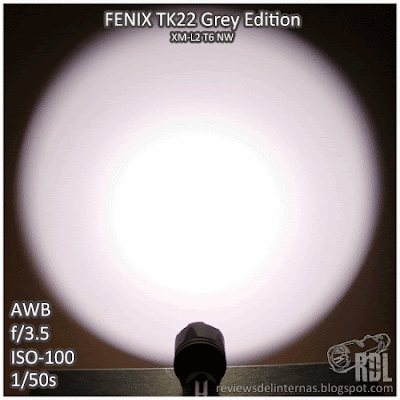

PERSONAL CONCLUSION
I’ve always been a big fan of classic design TK Fenix (you just have to look closely my blog’s logo…), and this TK15 Ultimate Edition in not exception, not only for its technical characteristics, but especially for its continuist design but with that special touch that gives the special anodizing in another color.


Fenix TK22 · Fenix TK12 · Nitecore P20UV · Fenix TK15UE · Fenix TK22 Gray Ed · Rayus PT11 · Nitecore P25
Negatives: As downside I’ll say that, although I understand why, I would have preferred a tailcap design which allow placing the flashlight in tailstand, as Fenix has done the TK12 (now renamed as TK09). Also I’d like if Fenix would offer more neutral tints in more models.
Positives: To the usual strong points of the Fenix brand, build quality, proven strength and confidence, this TK15UE adds a different, original exterior color appearance that sometimes we miss among the novelties of the big brands. A simple user interface, easy to understand with four well-spaced modes and a new and interesting thermal management that is sure to be appreciated on the long dark nights of upcoming winter.

